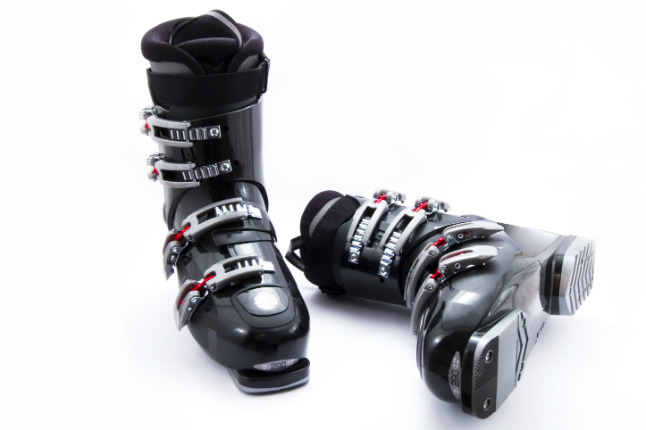Boot Camp: Fitting A Ski Boot, Step-By-Step
Fitting a ski boot shell to your foot should be treated like going to a tattoo artist: it's a highly personal process, you only get one crack at getting it right, and you never want to go into it drunk. Seriously. No one has exactly matching feet, and no two people like the exact same fit. While 10% may want their boots to have that über-snug race fit, the majority of skiers want a performance fit that will accommodate uphill flexibility for touring, stave off hot spots and blisters, keep you warm and comfortable all day and, ultimately, deliver the power and control you seek for the downhill. No matter your preference, the single best thing you can do to ensure your boots strike the perfect balance between comfort and performance is to get a good shell fit.
We've laid out some basic steps here to make sure you get an optimal shell fit. Some outdoor stores and most specialty ski shops have pro boot fitters who will walk you through the process, and we recommend you do that, if it's available to you. By the time you've invested hundreds of dollars in a quality ski boot, it just doesn't make sense to skimp on getting a good fit. But if you're a hopeless DIYer, or there's no pro boot fitter in your neck of the woods, use this article as a basic guide to getting a good fit.
Before You Start: Swap the Liner for a Thin Sock
It's critical that you fit a boot while wearing a thin ski sock. All liners compact, however minutely, with every single day you're out skiing. Sizing your boot snugly with a thin sock ultimately gives your liner a longer effective lifespan. It helps, too, that many companies today are using thermoformable liners in their boots. Warm and durable, these liners offer support and comfort to keep your feet cozy all day on the mountain. Many can even be reheated a couple times, breathing life back into your boot, which will sustain their overall longevity. In fact, if you purchase aftermarket liners, it's possible to keep the same boots for many years.
Step 1: Size the Shell
Pull out the liner and stand in the shell with your toes just touching the front of the boot. Lean forward and see how much space you have behind your heel. The ideal range here is between 14 and 30 millimeters (half an inch to an inch), with a perfect fit being right in the middle, around 22 millimeters. Many boot fitters use a "fit stick" that reflects these measurements and makes it easy to determine whether you're in the right shell.
Step 2: Mold the Liners
Once in the correct shell size, the second step for getting optimal fit is molding the liners. Rarely will a shell fit your foot perfectly. For instance, if you're between sizes 28 and 28.5, and have a very low-volume foot, choose to go with the smaller shell, and then custom mold those boots, really punching out the toe area by using the biggest toecap available. It's also possible to kick the boot into the ground in the toe area (or into any rigid object that you can kick toe-first) while the liner is heated up in the molding process. This process punches out the toe box, giving you extra space. Meanwhile, try not to move the rest of your foot a whole lot, so as to keep the fit snug through the rest of the boot. A quality boot fitter will walk you through all of this to ensure a good fit. If they don't,
Step 3: Choose Appropriate Foot Beds
Foot beds are the last ingredient to superior fit and performance. For the same reasons you wouldn't put crappy tires on a Porsche, you don't want to put flimsy foot beds in your custom-molded boots. A good fitter understands this, and will help you choose the best option based on your foot shape and personality. Don't think they're upselling you if they pick a high-end foot bed. At this point, it doesn't really make sense to be cheap. If you are, you'll be reminded of it—and pay for it—every single time you ski.
